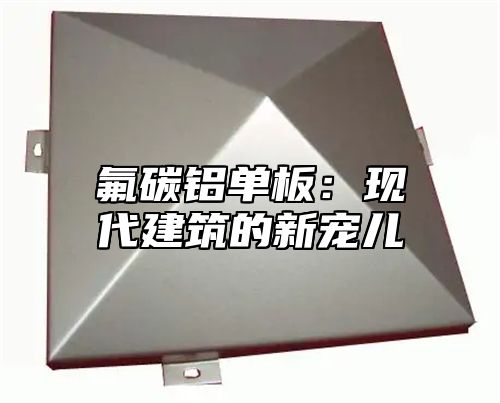

 Industry information
Industry information
Friends, today let's talk about a material that is quietly emerging in the construction industry - fluorocarbon aluminum veneer. You may not have heard of it before, but its application in modern architecture is becoming increasingly widespread!
We need to talk about the origin of the name fluorocarbon aluminum veneer. It is a new type of material made from aluminum plates treated with fluorocarbon coating. Does fluorocarbon coating sound a bit high-end? That's right, this coating endows aluminum veneer with many magical abilities.
Imagine a sunny afternoon, walking through the streets and alleys of the city, looking up at those skyscrapers. The curtain walls with metallic luster and smooth lines are likely made of fluorocarbon aluminum veneer. This material performs well in outdoor environments, not only with good weather resistance, but also with resistance to fading and corrosion. Do you think if this is used in our homes, office buildings, or shopping malls, it will instantly become taller?
Let's talk about the advantages of fluorocarbon aluminum veneer again. It is lightweight and easy to install. Compared to traditional materials such as stone and glass, aluminum veneer is more convenient for transportation and construction. The processing technology of aluminum veneer is mature, and various shapes and sizes can be customized according to the designer's needs, making the building more personalized.
I remember one time, I visited an office building under construction where workers were using aluminum veneers to build curtain walls. The aluminum veneers were neatly stacked piece by piece, and the workers were busy working with electric drills and screwdrivers. Watching their skilled operation, I couldn't help but exclaim that this fluorocarbon aluminum veneer is truly a great helper for modern architecture!
Everything has its two sides. Fluorocarbon aluminum veneer also has its drawbacks. Its price is relatively high, which may not be suitable for some budget limited construction projects. In indoor environments, aluminum veneer has strong reflectivity and may have a certain impact on indoor lighting.
However, I don't think this hinders fluorocarbon aluminum veneer from becoming the new darling of modern architecture. With the advancement of technology, the technology of fluorocarbon coating is also constantly improving, which gradually reduces the price of aluminum veneer. Designers can control the reflectivity of aluminum veneer within a reasonable range through clever design.
In my impression, there is a famous architectural case - Shanghai World Financial Center. The exterior of this building is made of fluorocarbon aluminum veneer. Under the sunlight, it appears particularly dazzling, like a brilliant pearl embedded in the Lujiazui area of Shanghai. I think this is the charm of fluorocarbon aluminum veneer!
In addition to curtain walls, fluorocarbon aluminum veneer can also be used in other places. Indoor partitions, furniture, decorations, etc. I have seen some designers use aluminum veneer to make TV cabinets and bookshelves, which are simple and elegant, both practical and beautiful.
Fluorocarbon aluminum veneer, as a new type of building material, has a very broad application prospect in modern architecture. I believe that with the continuous development of technology, its advantages will be better utilized and become more favored by architects and designers.
What I want to say is that architecture is a symbol of human civilization, and building materials are the cornerstone of constructing this symbol. The emergence of fluorocarbon aluminum veneer undoubtedly injects new vitality into modern architecture. Let's look forward to more new materials like fluorocarbon aluminum veneer in the future, adding more beauty and charm to our city!